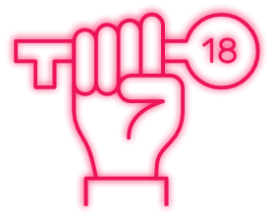
About Aurora.
Where Ability Meets Agility.
Aurora delivers impact for clients through our unique blend of strategy-first thinking and creative innovation.
All of our communication work is grounded in science, human insight and optimised by data to resonate with the relevant target markets.
Our approach connects our service offerings together to ensure that deep insights, brilliant creativity and intelligent metrics are part of every program.
With Aurora’s ability + agility, audiences are engaged and objectives are exceeded.
Underpinned, always, by excellence in client services.
Impact is guaranteed.
The data.




Services Information.

Medical Communications
We will work with you to develop impactful, evidence-driven strategies that deliver value for your organisation. Our Acumen process helps us get straight to the heart of the challenge, cutting through the noise to reach your audiences.
We harness the power of storytelling to deliver relevant content that educates healthcare practitioners and influences clinical practice to accelerate adoption of scientific advancements for the benefit of patients.
We have delivered strategic brand plans, informed by advisory board insights, scientific research, market research, and data analysis to deliver solutions throughout the communications spectrum from pre-to post-launch.
Our focus areas:
- Scientific and brand strategy and insight generation – KOL mapping, landscape assessment, scientific platforms, messaging
- Key expert/influencer engagement – Advisory boards, P2P engagement, steering committee engagement
- Medical communications – Disease awareness, MSL and training decks, medical websites, infographics
- Meetings and event management – Symposia, standalone meetings, Speaker training
![]() Contact Chris Hall, Director, Strategy chris.hall@auroracomms.com
Contact Chris Hall, Director, Strategy chris.hall@auroracomms.com

Communications
We find that sweet spot in the storytelling where you and your audience align. We work with clients to find their ‘why’, their purpose, and bring it to life through creative campaigns that act on audience insights.
It all begins with internal stakeholder alignment and co-creation of a vision for communications that translates to stories that make you laugh (or cry.) Stories that make you think, step out of your comfort zone, and inspire change.
Our focus areas:
- Data and regulatory milestones
- Disease awareness campaigns
- Corporate counsel and executive visibility
- Multichannel strategy and implementation
- Measurement strategy and frameworks
- Media relations
![]() Contact Chris Bath, Managing Director chris.bath@auroracomms.com
Contact Chris Bath, Managing Director chris.bath@auroracomms.com

Social Impact
An organization’s commitment to social purpose matters more than ever to people, patients and communities.
Yet, there are still significant socio-economic issues, which exist nationally, regionally and globally, and need to be addressed if we are to achieve the 2030 Sustainable Development Goal of universal health coverage. We believe that access to healthcare is a fundamental human right. Our work with Pharma, NGOs, advocacy partners and charities supports overcoming these issues to ensure that no-one is left behind in accessing health.
Our focus areas:
- Campaign planning
- Creative strategy and direction
- Channel strategy
![]() Contact Seb Stokes, Director, Creative and Innovation seb.stokes@auroracomms.com
Contact Seb Stokes, Director, Creative and Innovation seb.stokes@auroracomms.com

Patient Engagement
Patient engagement for us means partnership. We have a long heritage of working with patient communities, in rare and chronic diseases and oncology.
Together, we co-create impactful programmes – grounded in behavioural science – that address shared goals, underpinned by our PARTNER principles.
Our team has deep experience co-creating with patients and undergoes accredited industry training from the Patient-Focused Medicines Development.
We have built lasting relationships with patient advocacy groups at a UK, European and Global level.
Our focus areas:
- Behaviour-led health activation via our All for Activation approach
- Participant-focused clinical trial recruitment
- Patient advocacy strategy and partnerships

![]() Contact Stephen O’Farrell, Director and Head of Patient Engagement stephen.ofarrell@auroracomms.com
Contact Stephen O’Farrell, Director and Head of Patient Engagement stephen.ofarrell@auroracomms.com
We will work with you to develop impactful, evidence-driven strategies that deliver value for your organisation. Our Acumen process helps us get straight to the heart of the challenge, cutting through the noise to reach your audiences.
We harness the power of storytelling to deliver relevant content that educates healthcare practitioners and influences clinical practice to accelerate adoption of scientific advancements for the benefit of patients.
We have delivered strategic brand plans, informed by advisory board insights, scientific research, market research, and data analysis to deliver solutions throughout the communications spectrum from pre-to post-launch.
Our focus areas:
- Scientific and brand strategy and insight generation – KOL mapping, landscape assessment, scientific platforms, messaging
- Key expert/influencer engagement – Advisory boards, P2P engagement, steering committee engagement
- Medical communications – Disease awareness, MSL and training decks, medical websites, infographics
- Meetings and event management – Symposia, standalone meetings, Speaker training
We find that sweet spot in the storytelling where you and your audience align. We work with clients to find their ‘why’, their purpose, and bring it to life through creative campaigns that act on audience insights.
It all begins with internal stakeholder alignment and co-creation of a vision for communications that translates to stories that make you laugh (or cry.) Stories that make you think, step out of your comfort zone, and inspire change.
Our focus areas:
- Data and regulatory milestones
- Disease awareness campaigns
- Corporate counsel and executive visibility
- Multichannel strategy and implementation
- Measurement strategy and frameworks
- Media relations
An organization’s commitment to social purpose matters more than ever to people, patients and communities.
Yet, there are still significant socio-economic issues, which exist nationally, regionally and globally, and need to be addressed if we are to achieve the 2030 Sustainable Development Goal of universal health coverage. We believe that access to healthcare is a fundamental human right. Our work with Pharma, NGOs, advocacy partners and charities supports overcoming these issues to ensure that no-one is left behind in accessing health.
Our focus areas:
- Campaign planning
- Creative strategy and direction
- Channel strategy
Patient engagement for us means partnership. We have a long heritage of working with patient communities, in rare and chronic diseases and oncology.
Together, we co-create impactful programmes – grounded in behavioural science – that address shared goals, underpinned by our PARTNER principles.
Our team has deep experience co-creating with patients and undergoes accredited industry training from the Patient-Focused Medicines Development.
We have built lasting relationships with patient advocacy groups at a UK, European and Global level.
Our focus areas:
- Behaviour-led health activation via our All for Activation approach
- Participant-focused clinical trial recruitment
- Patient advocacy strategy and partnerships

Our Acumen™ process.




Problem definition
Insight-led Strategy
Creative development
Audience activation.
Impact and effectiveness
Our Leadership Team
Our Awards.
PR Week
top 20 healthcare agency
Communiqué
2023 finalist – Consultancy of the Year
Communiqué
2023 finalist – Charitable campaign of the year – Movember
Communiqué
2023 finalist – Excellence in Educational Meetings / Stand-Alone Events

PMEA
Excellence in Engagement Through Digital Channels – Roche SMA My Way
Communiqué
Healthcare Communications Leader for our CEO Claire Eldridge

Business Culture Awards
Building a Culture of Innovation For our dedication to developing our own culture, in partnership with Corporate Punk
Pharma Times
Communications Team of the Year
Communiqué
Communications Consultancy of the Year

PMEA
Excellence in Building Corporate Reputation and Trust for Making Gender Diversity Matter for MSD

PM Society
Corporate Communications Gold for our virtual reality patient campaign for Takeda
Communiqué
Collaborations and Partnerships for Travel with IBD campaign for Takeda
If you’re looking for a fresh challenge at one of the fastest growing, most dynamic and diverse networks around, we’d love to have you. Unparalleled career progression, excellent training and flexible working are just some of the reasons to join us.
Contact Sarah Nixon at sarah.nixon@auroracomms.com











